Volcanic ash
Topics available on this page:
Composition
Volcanic ash also poses a major risk to aviation as it can damage aircraft engines and dramatically reduce visibility.
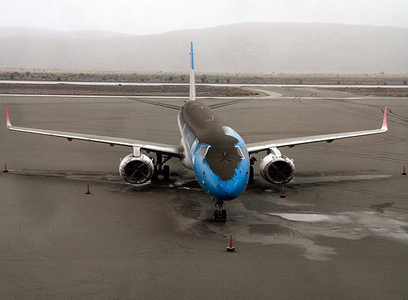
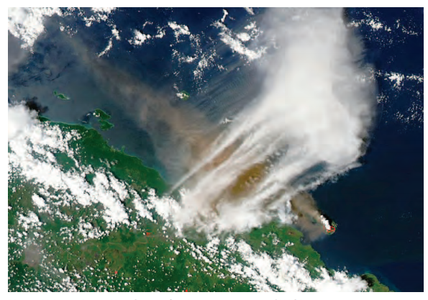
Source: Bom.gov.au
The volcanic ash is composed of vitreous volcanic particles, expelled by the volcanoes during an explosive eruption. They have up to 2 mm diameter.
These eruptions consist mainly of the escape of magma or fluid material from the interior of the volcano to the surface and to the atmosphere, as well as the release of large quantities of gases, which are responsible for the explosive phenomena of volcanic activity.
During the ascending path, after the explosion, these particles solidify and form a cloud.
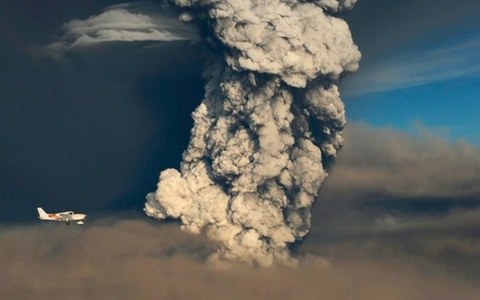
Source: BBC
Clouds of ashes can remain for several months, even a year more than 18 kilometers in altitude, which can lead to airspace blockage or interruption of airport operations, depending on the direction and intensity of the winds.
They can also cause damage to aircraft in flight and ground, delays, cancellations, realignment of the air network, and the need to clean airports and air navigation aids.
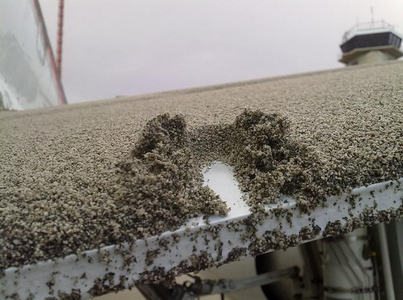
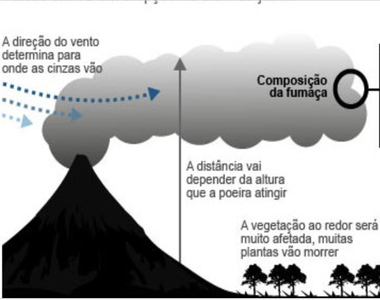
Damage to aircraft
In the high atmosphere, where commercial aircraft circulate, volcanic ash can cause engine malfunction, damage turbine blades or Pitot electronic probes.
Commercial jet airplanes are the ones that suffer the most serious damage when they fly through clouds that contain debris and gases produced by volcanic eruptions.
In actual propulsion systems, there are three effects that most contribute to the damage: erosion of compressor rotors, formation of molten silicates in the combustion chambers and turbines, and obstruction of the fuel system and engine cooling.
On aircraft surfaces, the most serious damage may occur on the cockpit windscreen, with loss of pilot visibility and unreliability of speed information due to obstruction of the pitot tube.
In addition, ashes can also damage other instruments outside the aircraft, such as radio antennas, which prevents communication and instrument landing, as well as blocking the cooling system or causing false fire alarms in the cargo compartment.
It is important to note that volcanic ash clouds are not detected by meteorological radars on board aircraft.

Note 7-1
After crossing a volcanic ash cloud, it is recommended that a complete check be made on the aircraft engines to identify possible damage.
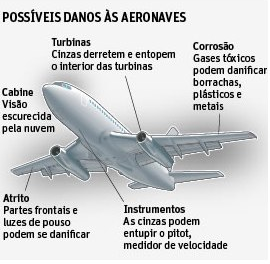
Effects for air traffic
According to the Flight Safety Foundation - FSF (1993), during some volcanic eruptions, pieces of rock and glass that are released can exceed 30 thousand meters of altitude and, in some situations, when associated to the strong currents of air, away from the point of origin, and in some cases may circulate the globe.
Because of this, volcanic ash can have a large-scale impact on international air traffic.
The threat of volcanic ash clouds to flight safety has attracted the attention of the aeronautical community when several commercial aircraft suffered serious damage after encountering this phenomenon.
The unpredictable nature of volcanic eruptions makes this phenomenon even more disturbing.
To inform international aviation about the position and movements of these volcanic ash clouds and to protect international aviation from this constant risk, "volcanic ash monitoring centers" were set up in meteorological institutes in 9 regions of the world. These centers monitor the ash, based on ground information, pilot reports, satellite images and numerical models of volcanic ash dispersion.
The closest center in Brazil is VAAC in Argentina. They are distributed throughout the world:
Anchorage VAAC - Anchorage, AK, United States
Buenos Aires VAAC - Buenos Aires, Argentina
• http://www.smn.gov.ar/vaac/buenosaires/inicio.php?lang=en
Darwin VAAC - Darwin, Australia
• http://www.bom.gov.au/info/vaac/
London VAAC - London, United Kingdom
• http://www.metoffice.gov.uk/aviation/vaac/
Montreal VAAC - Montreal, Canada
• http://meteo.gc.ca/eer/vaac/index_e.html
Tokyo VAAC - Tokyo, Japan
• http://ds.data.jma.go.jp/svd/vaac/data/index.html
Toulouse VAAC - Toulouse, France
Washington VAAC - Washington, DC, United States
• http://www.ospo.noaa.gov/Products/atmosphere/vaac/index.html
• http://www.ssd.noaa.gov/VAAC/messages.html
Wellington VAAC - Wellington, New Zealand
In Brazil, although there are no volcanoes, volcanic ash clouds from volcanoes in Argentina and Chile can influence Brazilian air traffic.
A recent case occurred in 2011. The Puyehue volcano erupted and threw rocks, ashes and gases into Chile's airspace. The explosion of the Puyehue generated a column of ashes and gases with 10 km of height and width of 5 km, that quickly reached an approximate extension of 3,300 kilometers.
The column of volcanic ash was transported by the winds to the Argentine territory, causing great amount of ash falling in the neighboring city of San Carlos de Bariloche. The volcanic material carried by the winds reached the Atlantic Ocean, causing problems for the air navigation.
The ash cloud spewed by the volcano has crippled flights from airports in Argentina, Chile, Uruguay and Paraguay. In Brazil, the cloud caused cancellations mainly at the Porto Alegre airport.
According to information from DECEA, this event caused considerable operational impact, caused delays in more than ten thousand flights and the cancellation of 5,017 domestic and international flights.
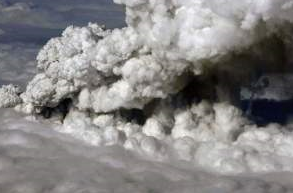
Source: NASA
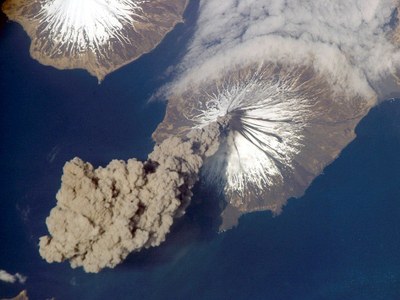
Source: NASA
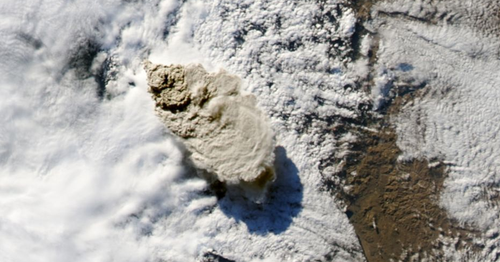
Source: NASA
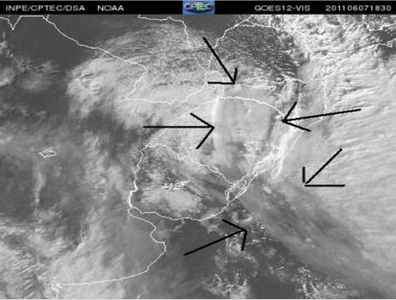
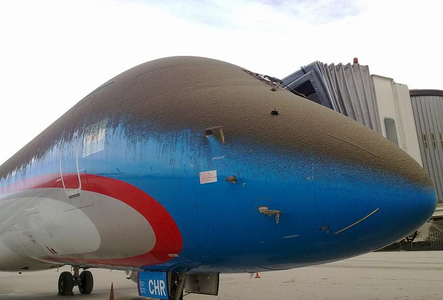
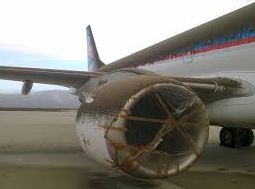
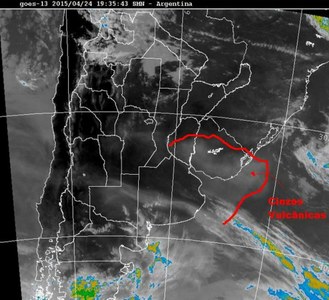
In the flight planning phase, the occurrence of volcanic ash at the departure aerodrome, along the route or at the destination aerodrome can be identified through the consultation of meteorological bulletins.

Click on the image to enlarge.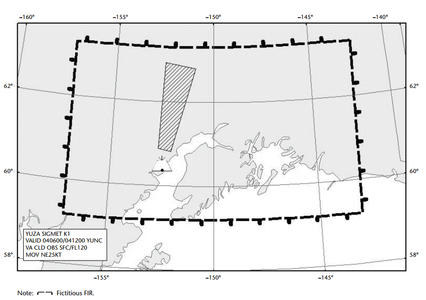
Source: World Meteorological Organization
Accidents and incidents
This phenomenon was mentioned in the investigation reports of the following accidents / incidents:
- B744, en-route, Alaska USA, 1989
- B742, en-route, Mount Galunggung Indonesia, 1982
Did you find errors in this content ? Send email to meteorologia@anac.gov.br to report.
